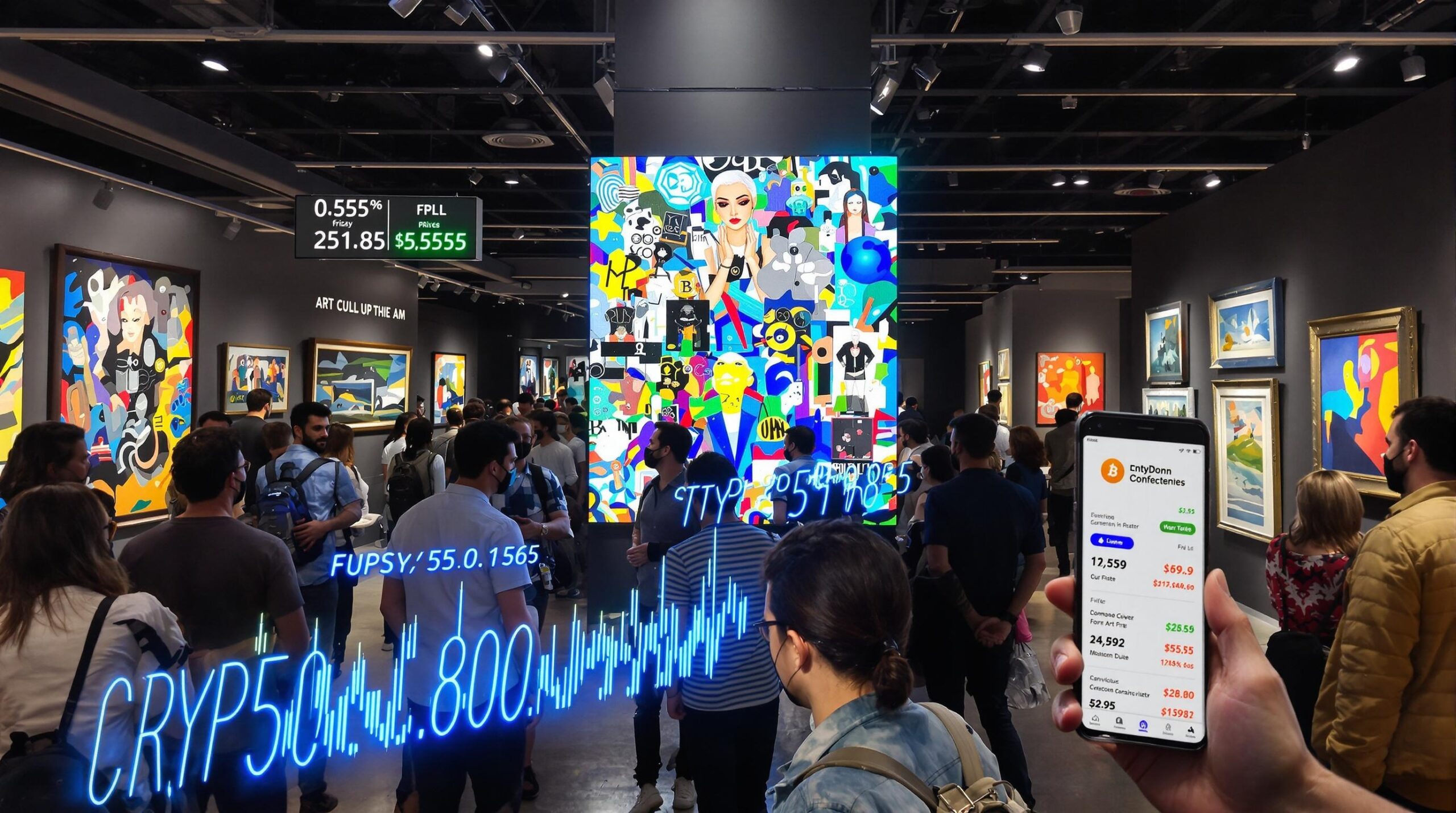Cryptocurrency has revolutionized various industries, including the global art market. This digital asset altered how artists and collectors operate. Its decentralized nature and security features significantly impact art transactions.
The Rise of Cryptocurrency in Art
Cryptocurrency emerged as a formidable force by providing alternative payment solutions within the art market. Artists now utilize blockchain technology. It offers a transparent and secure way to establish provenance and authenticate artworks. Major auction houses have embraced cryptocurrencies for transactions. Sotheby’s and Christie’s now accept Bitcoin and Ethereum. This adaptation has broadened their customer base, catering to tech-savvy collectors.
As art became more accessible to digital investors, market dynamics shifted. Artists experienced new levels of financial freedom. Blockchain-based platforms, such as SuperRare and Foundation, allow artists to sell directly to buyers. These platforms minimize the involvement of intermediaries, resulting in artists retaining more profits. Artists also reap ongoing royalties through smart contracts on every secondary sale.
Non-Fungible Tokens: A New Frontier
Non-fungible tokens (NFTs) gained prominence, acting as unique digital certificates for artworks. NFTs transformed ownership and valuation perceptions. Each token represents a distinct asset secured by blockchain technology, ensuring authenticity and rarity. Digital artists benefit from NFTs as they monetize works that previously lacked commercialization avenues.
Traditional artists also explored NFTs by digitizing their creations, expanding audiences beyond geographical limitations. The result is increased engagement and participation in digital spaces. High-profile NFT sales, like Beeple’s “Everydays: The First 5000 Days,” underscore this phenomenon. It earned $69 million at Christie’s and showcased the economic potential of NFTs.
NFTs provide more than financial opportunities. They grant artists control over their works and terms of sale. This sovereignty fosters artistic innovation, encouraging creators to experiment without commercial restraints. As a result, the traditional art market structure is transforming. Collectors and investors adapt to changing paradigms, ushering in a new era of art appreciation.
Cryptocurrency Enhances Art Market Accessibility
Cryptocurrency democratizes access to the art market. The elimination of geographical barriers is noteworthy. Typically, high entry costs and exclusive networks restrict art acquisition. Blockchain and cryptocurrency technology democratized access for a global audience, empowering diverse collectors to participate.
Cryptocurrency facilitates fractional ownership, allowing individuals to own portions of high-value artworks. This shift broadened the scope of art investment, making it accessible to a broader array of investors. Blockchain ensures transparency and ownership records for fractional assets, encouraging trust and participation.
Furthermore, cryptocurrency reduces transaction costs in art purchases. Traditional methods involve high fees for conversions and international transfers. Digital currencies minimize such fees, resulting in efficient transactions. This efficiency attracts new collectors seeking streamlined, cost-effective methods.
Challenges in Cryptocurrency Art Transactions
Despite cryptocurrency’s advantages, integrating it into the art market remains challenging. One significant issue is volatility. Cryptocurrencies like Bitcoin and Ethereum experience price fluctuations, which impact transaction value. Art market participants must carefully navigate these risks when pricing works.
Additionally, the environmental impact of cryptocurrency mining raises concerns. Bitcoin mining consumes substantial energy, contributing to carbon emissions. The art community must balance innovation with ecological sustainability, exploring eco-friendly blockchain alternatives. Ethereum’s shift to a proof-of-stake consensus mechanism is an example of such exploration.
Regulatory uncertainties present complexities in cryptocurrency art transactions. Different jurisdictions hold varying stances on digital assets. This inconsistency creates confusion for artists and collectors operating internationally. Establishing clear regulatory frameworks is crucial for fostering global market confidence.
The Future of Cryptocurrency in Art Markets
Cryptocurrency’s role in art markets shows potential for exponential growth. As technology evolves, pioneering opportunities will transform traditional practices. Integrating blockchain further enhances transparency and provenance tracking.
Moreover, digital art genres will continue expanding. Virtual reality and augmented reality help artists create immersive experiences. Such innovations align with cryptocurrency’s digital-centric ethos. These technologies redefine how audiences interact with art, drawing new demographics into the market.
Collector demographics are also shifting in response to cryptocurrency’s rise. Younger, tech-literate investors show increased interest in digital art. The merging of finance, technology, and art appeals to this audience, reshaping conventional collector profiles.
Conclusion
Cryptocurrency’s influence on global art markets is undeniable. It empowers artists, expands collector bases, and revolutionizes transaction frameworks. Its role will only deepen as the art world embraces digital evolution. Balancing innovation with sustainability and regulation remains key. As these dynamics unfold, the art market will continue transforming, adapting to cryptocurrency’s limitless possibilities.

